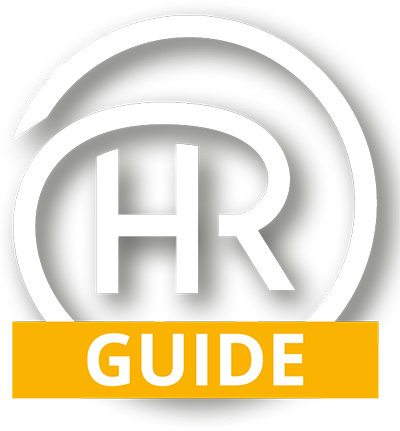SMART Goal Setting for Employee Performance
Written by Andrew Johnson, Founder and CEO HRGuide - Tue 9th Feb 2021
This short article sets out some key principles to adopt when embarking on this journey and planning for your success. So many people set goals only to give up and fail very quickly.
For each of us to reach our full potential we need clear direction, understand the part we play in the vision for the business and have a plan to ensure our efforts contribute to the overall success of the company. Objective setting is paramount in this, so it needs to be effective and of high quality. This article is designed to give you some structure, insight and best practice when setting your own objectives.
Key Principals for Setting Individual Objectives:
- Every employees objectives need to link to the Companies overall Vision, strategic plan, Functional Objectives and Team goals. This alignment is essential to maximise the effectiveness of the team and ensure you are pulling in the same direction.
- Ensure every employee has about five to six objectives (including at least one personal growth objective).
- All objectives need to be focused on the impact and outcome (rather than being transactional/activity based) – see our longer Guide for a detailed explanation of this principle.
- Sign off every employees objectives and ensure they are SMART. They are clear, they connect and complement each other and do not conflict with other individuals and teams objectives.
- Ensure there is a regular review process to measure how individuals and teams are tracking against their objectives. This is vital because what gets measured gets done.
BOMM – A Model for Objective Setting
The acronym BOMM is a useful way of remembering an effective objective setting methodology. Each letter in this acronym represents the following step in creating an objective:
- Base – a description of the current “base” position you are in regarding this objective area. e.g. We currently have X number of customers who purchase Y number of our products for a total value of Z income.
- Objective – a description of your desired future goal or position e.g. We need to increase our number of customers to X plus 10 who purchase Y plus 20 of our products for a total income of Z plus 15 in income in the next 12 months.
- Method – a description of the steps you are going to take to achieve your Objective. These steps effectively become your milestone plan and a detailed list of actions to deliver the plan. e.g. We will achieve our objective by:
- Identifying a target group of new customers
- Prepare a sales presentation focussing on the features and benefits of our product range
- Secure appointments and opportunities to present and sell out proposition
- Negotiate and secure new sales contracts with this target group
- Ensure supply and after sales support in place to maintain new customer base
- Measure – a description of the measures you will have in place to indicate your progress against your objective over the timeframe and when you have achieved your objective
Is your objective SMART?
Once you have established your objective using the “BOMM” methodology you should use SMART (Specific, Measurable, Achievable, Realistic, Time bound) to ensure it has the necessary elements to achieve your objective. Using SMART as a checklist for your objectives allows you to sense check not just what you want to achieve, but how likely you are to achieve it.
- Set Specific Goals
Your goal must be clear and well defined. Vague or generalized goals are unhelpful because they don't provide sufficient direction. Remember, you need goals to show you the way. Make it as easy as you can to get where you want to go by defining precisely where you want to end up.
- Set Measurable Goals
Include precise amounts, dates, and so on in your goals so you can measure your degree of success. If your goal is simply defined as "To reduce expenses" how will you know when you have been successful? Without a way to measure your success you miss out on the celebration that comes with knowing you have actually achieved something.
- Set Achievable Goals
Make sure that it's possible to achieve the goals you set. If you set a goal that you have no hope of achieving, you will only demoralize yourself and erode your confidence.
However, resist the urge to set goals that are too easy. Accomplishing a goal that you didn't have to work hard for can be anticlimactic at best and can also make you fear setting future goals that carry a risk of non-achievement. By setting realistic yet challenging goals, you hit the balance you need. These are the types of goals that require you to "raise the bar" and they bring the greatest personal satisfaction.
- Set Relevant Objectives
Your objectives should link to the objectives of your team, function and Company. If Goals are also relevant to the direction your employees want their professional career to take they can be developmental as well.
- Set Time-Bound Goals
Your goals must have achievable milestones and deadlines. If you have set, clear milestones you can track and measure where you are against your overall project plan. When you are working on a deadline, your sense of urgency increases, and achievement will come that much quicker.
Get expert advice on goal setting from HRGuide
Creating robust measurable goals for every employee ensures everyone is aligned to the Companies Vision, Mission and Business Planning goals as well as ensuring all employees are contributing to the businesses overall performance. Download our more detailed step by step HR How to Guide for more detail on goal setting by subscribing to https://www.hrguide.co.uk/subscribe.php
If our step-by-step HR How to Guide doesn’t give you the support you need, simply call us on our HR Helpline for expert advice.

